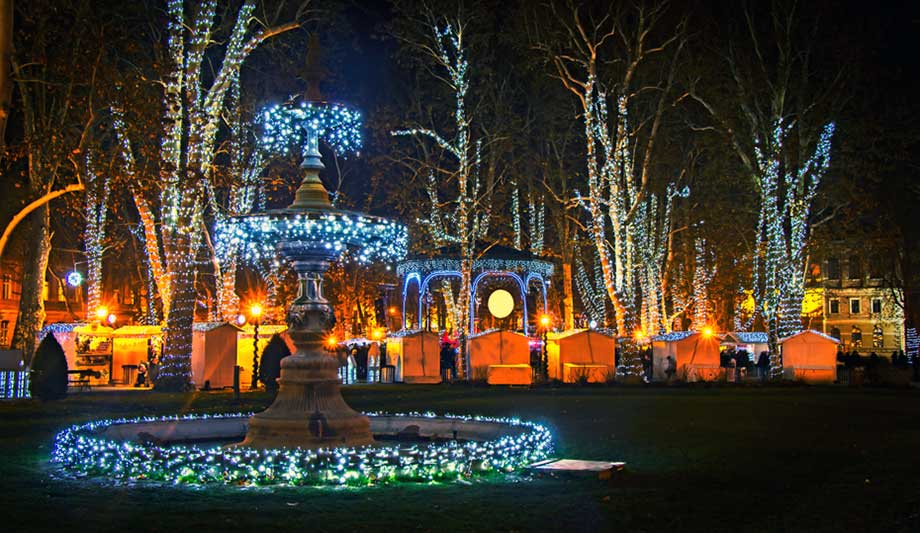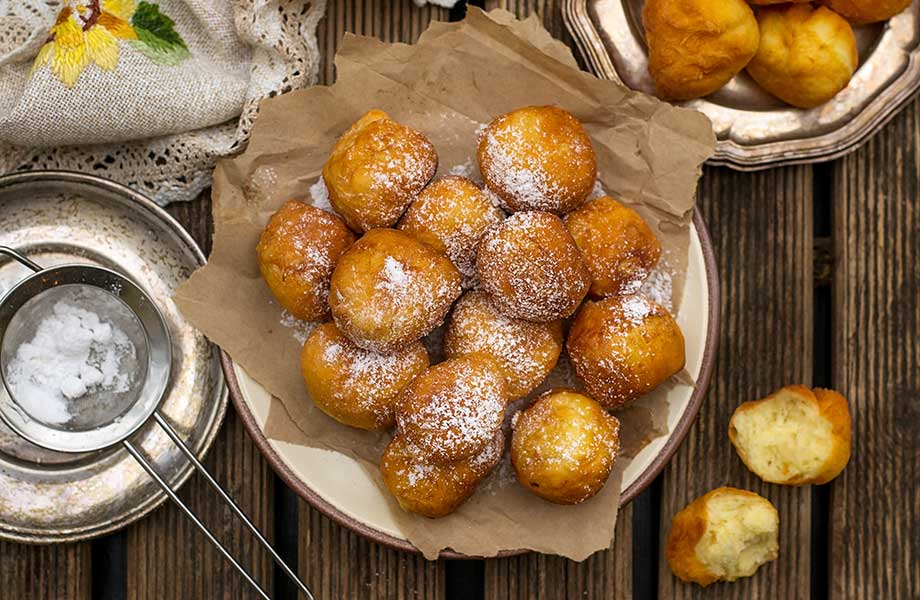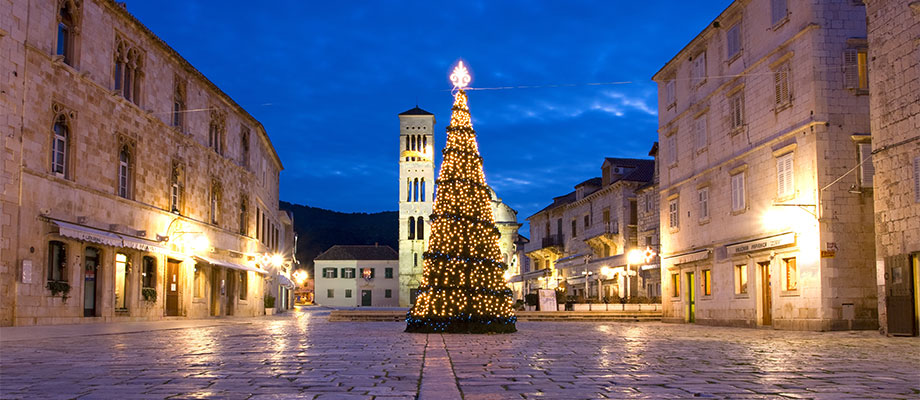Learn some Croatian before you visit Croatia! :-)
Our school offers online group & one-to-one lessons from qualified teachers – from €11/lesson!

Our school offers online group & one-to-one lessons from qualified teachers – from €11/lesson!
25th November
For the majority of Croatians preparations for Christmas commence on Advent Sunday (as is customary in most western countries) however this isn't true for all of Croatia!
In some parts of Croatia preparations for Christmas begin on Sveta Kata (also referred to as Sveta Katarina) on 25th November and last for an entire month, although this isn't a very common practice.
A proverb in those parts of Croatia, Sveta Kata zatvara vrata which translates to mean "St. Kate closes the door" and indicates that no weddings or other large celebrations should be held after the 25th November!
4th Sunday before Christmas Day
Prva adventska nedjelja marks the beginning of the season of Advent.
On this day, the first (of four) candles in the Advent wreath is lit. In the past, Croatians used to braid their own Advent wreaths from evergreen branches in such a way that there was no beginning nor the end in the wreath, which symbolised eternity.
6th December
Generally, Croatians love giving gifts and Sveti Nikola marks the beginning of the gift-giving season in December!
On the eve of St. Nicholas' Day, children traditionally clean their boots and leave them on the window sill, hoping that St. Nicholas will bring them gifts, usually sweets ... while those children who weren't good that year get sticks instead!
St. Nicholas is accompanied by Krampus, a hairy demon. While Nicholas rewards the good children, it's Krampus who leaves sticks for the children who behaved badly so that their parents can discipline them!
 Advent decorations in Zagreb
Advent decorations in Zagreb
13th December
In southern and north-eastern Croatia traditionally it was Sveta Lucija that brought gifts, while children in central and northern Croatia used to receive gifts on St. Nicholas' Day.
And in fact, in the past no gifts were given or received on Christmas day at all!
Nowadays, December has become a real win-win situation for kids in Croatia, since many of them now get presents on St. Nicholas' Day, St. Lucia's Day AND on Christmas Day!
4th December
On 4th December mothers – or, sometimes, daughters – plant wheat grains, usually in a round dish, which is known as božićna pšenica (Christmas wheat).
The belief is that the taller the wheat grows, the more prosperous the coming year will be. This tradition dates back to times when agriculture was the main economic activity.
By Christmas Eve, the wheat, now hopefully tall, green and beautiful, is tied with a ribbon in red, white and blue – the colours of the Croatian flag.
In Slavonia, people pay close attention to the weather on each day from St. Lucia's day until Christmas, which falls on the 12th day from St. Lucia's Day. They believe that the weather on each of these days indicated what the weather will be like on each of the following 12 months of the upcoming year.
 Božićna Pšenica which is growing well!
Božićna Pšenica which is growing well!
24th December
The word Badnjak, which is how Croatian's refer to Christmas Eve, comes from the name of the log lit on Badnja večer, the evening before Christmas Day, usually by the father of the family. In some regions of Croatia (e.g. Dalmatia) the log is sprinkled with wine before being lit.
The Croatian also sometimes refer to Christmas Eve as Badnji dan. Traditionally, Badnjak is the most important part of the entire Christmas celebration.
The badnjak log is usually cut on Christmas Eve in the morning, but this custom is also prone to regional interpretations. However, the log is supposed to be kept burning throughout the whole of Christmas Day. Note that, nowadays, the custom of lighting a badnjak is practiced only in rural areas, for obvious reasons.
 Fritule – sweet, deep-fried doughnut balls
Fritule – sweet, deep-fried doughnut balls
Decorating Christmas trees didn't become a custom in Croatia until the mid-19th century. Before then, homes were normally decorated on Christmas Eve with flowers and fruits, mostly apples, plums and pears. Children were usually in charge of decorating their homes on Christmas Eve. Apart from flowers and fruits, children used to make paper ornaments.
Following the introduction of Christmas trees, at first deciduous trees were used, and these were decorated with gilded walnuts and hazelnuts. It was only later that evergreen trees become more common.
Christmas candles have always been an important Christmas ornament and they were usually placed in the middle of the round plate where the Christmas wheat grew.
Later, trees were also decorated with small pieces of cotton or paper, symbolising snow. In the olden days it was only the wealthy that could afford the luxury of possessing special Christmas ornaments or figurines.
 Christmas tree on Hvar
Christmas tree on Hvar
25th December
On Božić (Christmas day), the dinner typically consists of
... as well as all sorts of cakes which are traditionally baked on Christmas Eve.
6th January
Bogojavljenje – also referred to as Sveta tri kralja (Holy three kings) – represents the end of the Christmas season. On this day, people usually take down their Christmas trees and decorations.
In some parts of in northern and north-eastern Croatia, there is a tradition that groups of 3 boys, called zvjezdari (zvijezda meaning star, named after the Bethlehem star made of cardboard that they carry with them) or betlehemari or svjećari (svijeća = light; candle) go from house to house and people give them gifts.
Zvjezdari are sometimes accompanied by other boys who sing occasional songs.
Djed Božićnjak
Answer
Santa Claus
Djed Mraz
Answer
Santa Claus
sanjke
Answer
sleigh
božićni pokloni
Answer
Christmas gifts
adventski vijenac
Answer
Advent wreath
sob
Answer
reindeer
božićni ukrasi
Answer
Christmas decorations
snježna pahulja
Answer
snowflake
božićno drvce
Answer
Christmas tree
Božićna svijeća
Answer
Christmas candle
Sretan Božić!
Answer
Merry Christmas!
Sretna Nova godina!
Answer
Happy New Year!
We’ll be happy to tell you more about our language school and the learning options we offer. Feel free to contact Andrea directly for a chat about any questions you might have!
